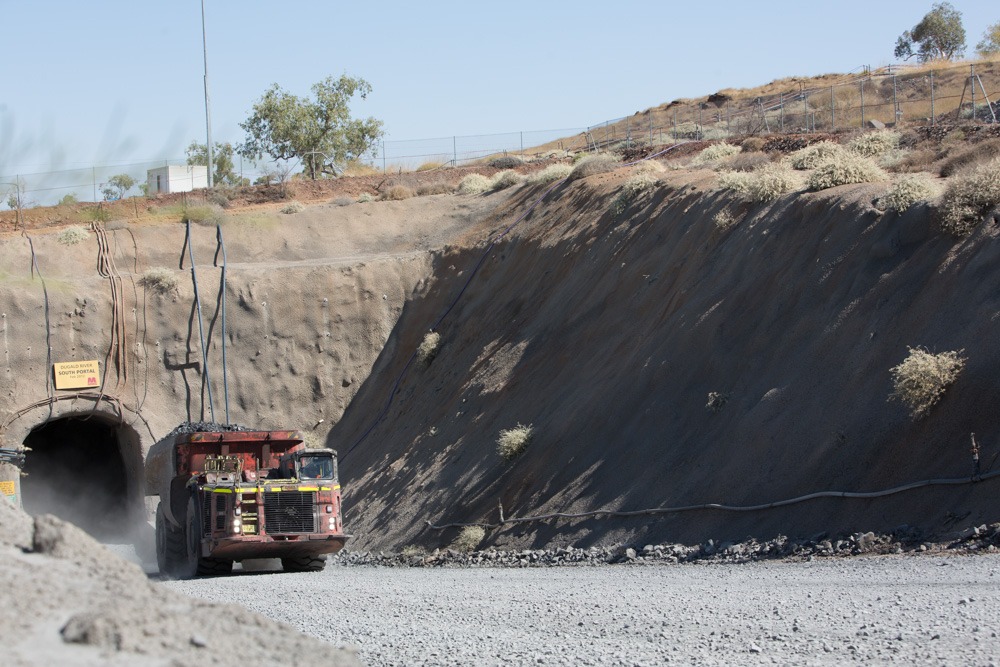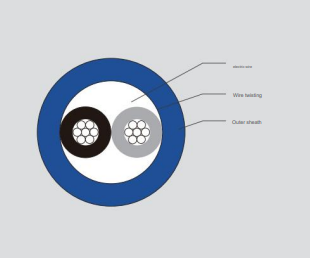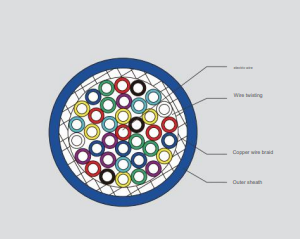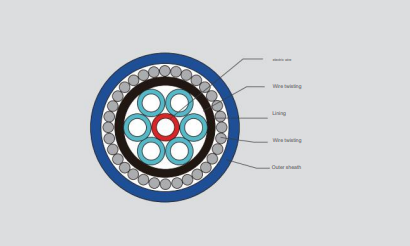What is the Control Cable for Coal Mine (Flame Retardant Cable)
Learn about coal mine control cables with flame retardant properties, their applications, specifications, and safety features. Discover MKWRP and M0W32 series cables for underground mining operations and power distribution systems.
6/4/20259 min read
What is the Control Cable for Coal Mine (Flame Retardant Cable)
Understanding Control Cables in Coal Mining Operations
When we think about the complex infrastructure that keeps modern coal mining operations running safely and efficiently, control cables represent one of the most critical yet often overlooked components. These specialized electrical cables serve as the nervous system of underground mining facilities, transmitting vital control signals and distributing power throughout the harsh and potentially dangerous environment beneath the earth's surface.
Control cables designed for coal mining applications are fundamentally different from standard electrical cables you might find in residential or commercial buildings. The unique challenges presented by underground mining environments demand cables that can withstand extreme conditions while maintaining the highest safety standards. These cables must operate reliably in environments characterized by moisture, dust, mechanical stress, and most importantly, the ever-present risk of fire or explosion that makes coal mining inherently hazardous.
The defining characteristic that sets mining control cables apart is their flame-retardant properties. This isn't simply an added feature but rather a fundamental safety requirement that can mean the difference between a minor incident and a catastrophic disaster. In the confined spaces of underground mines, where escape routes are limited and ventilation systems are crucial, preventing the spread of fire through electrical infrastructure becomes a matter of life and death for miners working hundreds of feet below ground.
Primary Applications and Critical Use Cases
The versatility and reliability of flame-retardant control cables make them indispensable across multiple aspects of coal mining operations. Understanding these applications helps us appreciate why these cables are engineered to such demanding specifications and why their proper selection and installation are so crucial for mining safety and productivity.
Power Distribution Systems: One of the most fundamental applications involves distributing electrical power to various pieces of mining equipment throughout the underground facility. This includes everything from massive coal extraction machinery and conveyor belt systems to lighting installations and ventilation fans. The cables must be capable of handling significant electrical loads while maintaining their integrity in environments where traditional power distribution methods would quickly fail. The power distribution network in a coal mine is often compared to the circulatory system of a living organism, with control cables serving as the arteries that deliver life-sustaining energy to every corner of the operation.
Signal Transmission and Monitoring: Perhaps even more critical than power distribution is the role these cables play in transmitting control signals and monitoring data throughout the mining facility. Modern coal mining operations rely heavily on sophisticated automation and monitoring systems that track everything from air quality and gas concentrations to equipment performance and worker location. The control cables carry the data signals that allow these systems to function effectively, enabling real-time monitoring of conditions that could indicate potential safety hazards or operational inefficiencies.
Underground Communication Networks: In the challenging environment of underground coal mining, maintaining reliable communication between surface operations and underground crews is absolutely essential for both safety and operational coordination. Control cables form the backbone of these communication networks, carrying voice and data signals that keep mining teams connected with supervisors, emergency response personnel, and automated safety systems.
Environmental Monitoring and Safety Systems: Coal mines require constant monitoring of atmospheric conditions, including oxygen levels, methane concentrations, and the presence of other potentially dangerous gases. Control cables connect the various sensors and monitoring devices that make up these critical safety systems, ensuring that any changes in environmental conditions are immediately detected and communicated to both automated safety systems and human operators.


Technical Specifications and Engineering Excellence


The engineering behind coal mining control cables represents a fascinating intersection of electrical engineering, materials science, and safety technology. Each component of these cables is carefully designed and tested to meet the demanding requirements of underground mining environments.
Electrical Characteristics: Most coal mining control cables are rated at 450/750V AC, a specification that reflects the balance between providing adequate power transmission capability while maintaining safety margins appropriate for underground use. This voltage rating ensures that the cables can handle the electrical demands of mining equipment while remaining within safe operating parameters even when subjected to the stress and wear typical of mining environments.
The conductor material is invariably copper, chosen for its excellent electrical conductivity, resistance to corrosion, and mechanical properties. However, the copper conductors in mining cables are typically stranded rather than solid, a design choice that significantly improves the cable's flexibility and resistance to fatigue from repeated bending and movement. This flexibility is crucial in mining applications where cables must often be routed through complex pathways and may be subject to regular repositioning as mining operations progress.
Insulation and Protective Systems: The insulation system represents perhaps the most sophisticated aspect of coal mining control cable design. Materials such as specially formulated polyolefin compounds or PVC enhanced with flame-retardant additives are used to create insulation that not only provides excellent electrical isolation but also actively resists ignition and flame propagation. These materials are carefully engineered to maintain their protective properties even when exposed to the temperature extremes, moisture, and chemical exposure common in mining environments.
For applications where environmental concerns are paramount, halogen-free flame-retardant options are available. These advanced formulations provide the same level of fire protection while significantly reducing the production of toxic gases in the event of a fire, an important consideration for worker safety and environmental protection.
Temperature Performance: Operating temperature ranges for these cables typically extend up to 70°C under normal conditions, with the ability to withstand short-circuit temperatures reaching 250°C. This temperature performance is crucial because mining equipment often generates significant heat, and the confined spaces of underground mines can experience temperature variations that would challenge conventional electrical cables.
Mechanical Protection and Durability: The mechanical properties of coal mining control cables reflect the harsh realities of their operating environment. Minimum bending radius specifications, typically ranging from 6 to 12 times the cable diameter depending on construction, ensure that the cables can be installed and operated without damage to their internal structure. For applications requiring additional protection, armored cable options incorporate steel wire armor that provides enhanced resistance to crushing, cutting, and other forms of mechanical damage that might occur in active mining environments.




Specialized Cable Series and Product Selection
The diversity of coal mining applications has led to the development of specialized cable series, each optimized for specific use cases and environmental conditions. Understanding these different series helps mining engineers and safety professionals select the most appropriate cables for their particular applications.
MKWRP Series: This series represents the standard for general control circuit applications in coal mining environments. Available with core counts ranging from 4 to 37 conductors and conductor sizes from 0.5 to 2.5 mm², the MKWRP series offers the flexibility needed for most control and monitoring applications. The flame-retardant properties are built into the cable design from the ground up, ensuring reliable performance in applications where fire safety is paramount but extreme mechanical protection isn't required.
The versatility of the MKWRP series makes it particularly well-suited for applications such as connecting control panels to mining equipment, linking sensors to monitoring systems, and providing power and control signals to automated safety devices. The range of core counts available allows engineers to select cables that precisely match their application requirements without over-specifying or compromising functionality.
M0W32 Series: When applications demand enhanced mechanical protection, the M0W32 series provides the additional durability needed for the most challenging mining environments. Featuring steel wire armor construction, these cables can withstand the mechanical stresses associated with heavy machinery operations, frequent cable movement, and potential impact from mining equipment or falling debris.
Available with core counts from 7 to 37 conductors and conductor sizes ranging from 1.5 to 2.5 mm², the M0W32 series is specifically designed for applications where cable damage from mechanical sources represents a significant risk. The steel wire armor doesn't just provide protection; it also allows these cables to be installed in locations and applications where unarmored cables would be unsuitable or would require additional protective measures.


Safety Standards and Regulatory Compliance
The regulatory environment surrounding coal mining safety is necessarily stringent, and control cables used in these applications must meet a comprehensive array of international and national standards. Understanding these standards helps explain why coal mining control cables are engineered to such demanding specifications and why proper selection and installation are so critical.
International Standards Compliance: The IEC 60332 standard for flame retardancy represents one of the most important regulatory requirements for coal mining control cables. This standard establishes specific test methods and performance criteria that cables must meet to be considered suitable for use in environments where fire safety is critical. Cables meeting IEC 60332 requirements have been tested under controlled conditions to verify that they will not contribute to fire propagation and will maintain their integrity long enough to allow for safe evacuation and emergency response.
Mining-Specific Regulations: The MT818-2011 standard specifically addresses the unique requirements of mining applications, covering aspects such as environmental resistance, mechanical durability, and long-term reliability under the specific conditions encountered in coal mining operations. This standard recognizes that mining environments present challenges that go beyond those addressed by general electrical cable standards, requiring specialized testing and performance verification.
Environmental and Health Considerations: Modern regulatory frameworks increasingly recognize the importance of environmental protection and worker health, leading to requirements for cables that minimize toxic emissions in the event of fire or thermal breakdown. Halogen-free flame-retardant cables address these concerns by eliminating materials that could produce dangerous gases during combustion, representing an important advance in mining safety technology.
Installation Considerations and Best Practices
Proper installation of coal mining control cables requires understanding not just the technical specifications of the cables themselves, but also the unique challenges and requirements of the underground mining environment. The installation process must account for factors such as cable routing through complex underground structures, protection from mechanical damage, and accessibility for maintenance and inspection.
Environmental Adaptation: Many coal mining control cables are specifically designed to operate effectively in wet conditions, featuring waterproof sheathing and sealing systems that prevent moisture infiltration. This capability is essential because underground mining environments often involve significant moisture exposure from groundwater seepage, humidity, and industrial processes. The cables must maintain their electrical and mechanical properties even when subjected to continuous moisture exposure over extended periods.
Mechanical Installation Requirements: The confined spaces and complex geometries typical of underground mining facilities place special demands on cable installation procedures. Cables must often be routed through irregular pathways, around obstacles, and through areas where space is at a premium. The flexibility characteristics of mining control cables are specifically engineered to accommodate these installation challenges while maintaining their protective and performance properties.
Future Developments and Technological Advances
The field of coal mining control cables continues to evolve as new materials, manufacturing techniques, and safety requirements drive innovation. Understanding these trends helps mining professionals make informed decisions about cable selection and infrastructure planning.
Advanced Materials Development: Research into new polymer formulations and composite materials continues to push the boundaries of what's possible in terms of flame retardancy, environmental resistance, and mechanical durability. These advances promise to deliver cables that offer improved performance while potentially reducing costs and environmental impact.
Smart Cable Technologies: The integration of sensing and monitoring capabilities directly into cable designs represents an exciting frontier in mining safety technology. These smart cables can provide real-time feedback about their own condition, environmental exposure, and performance characteristics, enabling predictive maintenance and enhanced safety monitoring.
Conclusion and Selection Guidelines
The selection and application of control cables for coal mining operations represents a critical decision that impacts both safety and operational efficiency. Understanding the technical specifications, application requirements, and regulatory standards that govern these cables enables mining professionals to make informed choices that protect workers while supporting productive mining operations.
When choosing between different cable series and specifications, consider factors such as the specific application requirements, environmental conditions, mechanical protection needs, and regulatory compliance requirements. The MKWRP series offers excellent performance for general control applications, while the M0W32 series provides the additional mechanical protection needed for the most demanding environments.
The flame-retardant properties that define these cables aren't just regulatory requirements but fundamental safety features that protect lives and preserve critical infrastructure in one of the world's most challenging industrial environments. By understanding and properly applying these specialized cables, mining operations can maintain the highest standards of safety while achieving their operational objectives in the complex world of underground coal extraction.


